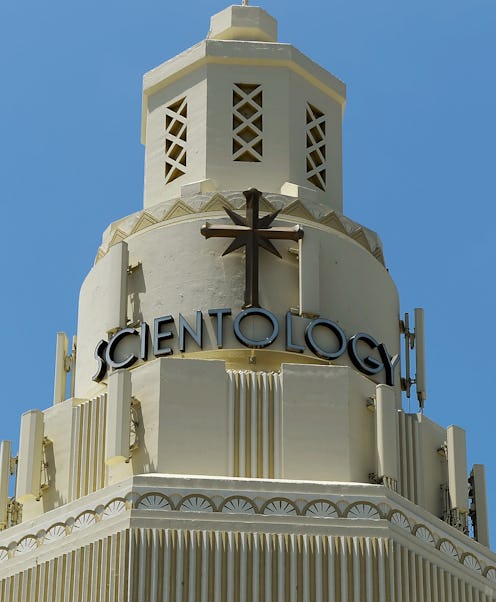News
Scientology Sneaks Back Into Public Schools
There's a good reason why this anti-drug program has been banned in many public schools since 2005. Narconon Drug Prevention and Education, which has ties to the Church of Scientology, had been providing a free anti-drug program to California schools until medical experts deemed Naronon's teachings "pseudoscience." But it's been revealed that the program has been making its way back into classrooms: according to the San
Francisco Chronicle, Narconon has given free presentations in at least 28 California schools since 2007.
In 2004, the San Francisco Chronicle exposed the drug program's links to the Church of Scientology and suggested that it was used to introduce church beliefs to students as young as third grade. The program was reportedly nothing but disguised Scientology lessons, and there was no real science supporting its claims. As a result, the state Department of Education authorized a review of the program, conducted by 14 independent experts in substance abuse and health education, including medical doctors and university faculty.
"Narconon's drug prevention program does not reflect accurate, widely-accepted medical and scientific evidence," Jack O'Connell, the state superintendent of public instruction at the time, told schools in a letter posted on the department's website in 2005.
Upon closer examination, the program materials bear a strikingly similar resemblance to the church's teachings.
Speaking to the Chronicle, Lee Saltz, a drug counselor with the Los Angeles school district, said, "Narconon, to me, is Scientology. We don't use their curriculum because it's not grounded in science. But they bypass our office and go directly to the schools. They're very persistent."
Despite the state reviews, Narconon officials assured that the program is secular. Narconon president Clark Carr, who is a Scientologist, insists that the program is based on real science, that there is no religion in the curriculum, and that it's legally and financially independent of the church.
"It's our job to keep them separate," Carr told the Chronicle. "We work full time to do this. If we went into the school district as Scientology, with the separation of church and state, it wasn't going to work.... For us, the larger issue is that kids need help. We're not in this for any other agenda."
Narconon must have been very driven by that agenda, because it has found its way back into schools a decade later. And now Carr is insisting that the curriculum has been revised since the state's findings, and is receiving positive responses from students and teachers alike.Indeed, one teacher from Irvington High in Fremont actually wrote Narconon a thank-you letter in 2012, saying, "Students now have a broad understanding of drug addiction, its consequences, and the path they would need to take if they had to go to rehabilitation."
One teacher from a Bay Area school recently allowed the lectures until she learned about the state's review of the program. She told the Chronicle , "I would never have guessed. I need to double-check now."
Similar cases have popped up in Los Altos, Morgan Hill, San Jose, San Ramon, Santa Clara, and Santa Rosa. Whether or not Narconon's teachings are based on real science, one thing is for sure: they're closely tied to Scientology.
- Narconon is a drug-free withdrawal, detoxification and rehabilitation program utilizing techniques developed by L. Ron Hubbard, the founder of the Church of Scientology.
- Narconon began as a grassroots movement when an Arizona State Prison inmate overcame his own drug problems using the principles in one of L. Ron Hubbard's books. He then applied the same teachings to other inmates and helped solve their drug issues.
- The detoxification program is based on the theory that drugs are stored in a person's fat cells and are released again at a later time, prompting the person to use again.
- The program is four to six months and includes a detox regimen of aerobic exercise ad sauna sessions, which help to release the drug's toxins through sweating, hydration and nutrition supplements, life skills training, and personalized guidance for after-program living.
- Another key component to the program is the use of niacin, which Hubbard believed would increase fatty acid mobilization.
- Drugs burn vitamins and nutrients in your body, causing pain and relapse.
- Marijuana "munchies" is caused by the said loss of vitamins and nutrients.
Many of these assertions were found to be unfounded or false, according to drug and health experts.
